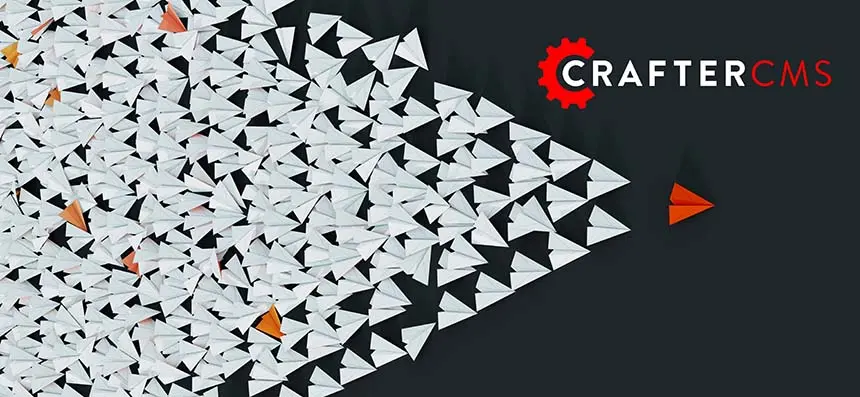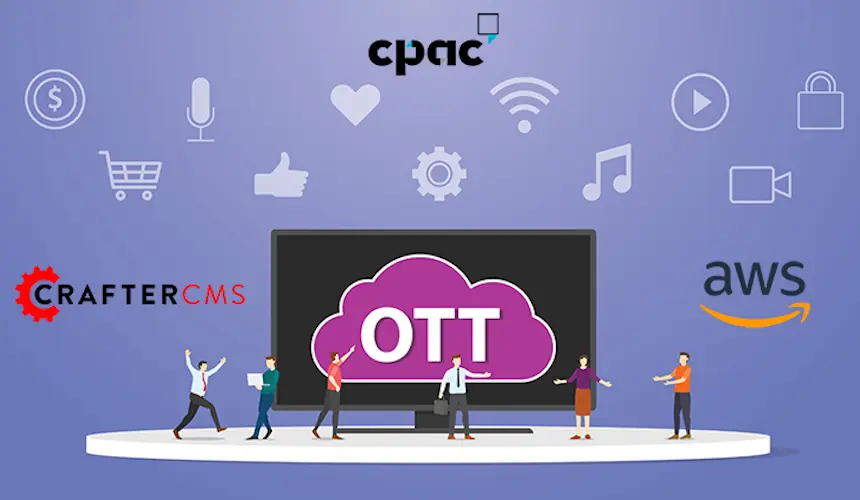Crafter: The Ultimate API-First CMS

Mike Vertal

Flexibility, ease of use, and the ability to innovate quickly are a few things that marketers and developers at enterprise companies expect from their software. Unfortunately, not every platform can successfully provide these characteristics, resulting in frustration for them and the customers they serve.
Many enterprises continue to rely on customized legacy technology that provides little agility and adaptability to the ever-changing business world. To alleviate these challenges and ensure that internal stakeholders have the tools they require and customers can receive the type of digital experiences they desire, organizations need something else. As Forrester points out, “modern technology, built for the cloud with API-first modularity, enables businesses that embrace it to adapt much faster.”
We’ll dive into the API-first approach and highlight how Crafter’s API-first CMS provides exactly the type of adaptability required for enterprises today.
What Is An API-First CMS?
An API-first CMS carries many of the same characteristics of a headless CMS. Unlike a traditional CMS, where the front-end presentation layer and backend content management and storage layer are tightly coupled, the front-end component is removed in an API-first CMS.
The backend layer acts as a content repository that houses all content assets and allows internal teams to manage that content and then connect to the frontend using APIs.
Using this approach, an API-first CMS can connect to not only modern enterprise websites but also to customer portals, intranets, mobile apps, connected cars, AR/VR experiences, IOT devices, and essentially any digital channel.
However, this only explains the content delivery aspect of an API-first CMS. Let’s take a look at what APIs are and why they are fundamental to the modern enterprise for both content authoring, content management, and content delivery.
Why APIs Are The Future
Application programming interfaces or APIs essentially enable separate applications to talk with each other. APIs are arguably the most critical components of modern software applications and have facilitated what we know today as the API economy, which refers to how APIs can positively impact a business’s goals and profitability.
Several businesses today are built on top of a best-of-breed system of applications. Rather than having to custom-build every piece of software that your business needs, or rely on a monolithic suite of applications that you won’t use in its entirety, APIs enable organizations to construct the ideal technical ecosystem that fits its business requirements, budget and resources.
Content management is a crucial part of the modern enterprise, and most software applications and all digital experiences are reliant on content. An API-first or headless CMS may sit at the center of an organization’s infrastructure, but other software tools need to be integrated for enterprises to function effectively.
When using a traditional CMS, integrating other disparate tools can be a problem and difficult for developers to do. With an API-first CMS, however, integrations are much smoother due to the presence of APIs.
Benefits of an API-First Approach to Content Management
An API-first CMS enables businesses to deliver content to various channels outside of the website, but it also provides additional benefits for managing content.
Future-Proof
Before headless CMSs came into the picture, if you had a traditional CMS, you would have had to re-platform or add an additional CMS to your tech stack to deliver content to different channels. Now, with the help of APIs, CMSs can have future-proof longevity.
As new technologies and digital channels emerge, they can be easily connected to the CMS without adding an entirely new piece of software. Given the rate that new channels are added, this can provide cost savings and other resource allocation benefits to enterprise businesses.
Developer Flexibility
Traditional CMS platforms are known for limiting developers, restricting them to specific templates that dictate how the frontend looks. In an API-first CMS, developers can custom-build frontends themselves, using the modern tools and frameworks that fit each use case.
Omnichannel Connectivity
Content isn’t just delivered to more channels with an API-first CMS, but rather it allows developers and marketers to work together to build omnichannel experiences. When consumers transition from one channel to another when interacting with a brand, they can do so seamlessly and expect the same quality of experience on each channel. Plus, with other software platforms connected to the CMS through APIs, internal teams can get a complete picture of everything going on in their system.
How Crafter Does API-First
An API-first headless CMS provides a solid foundation for any enterprise that wants to take control of its content management. Yet CrafterCMS’s headless “plus” capabilities make it more than just any other headless CMS.
Built API-First
Some CMS platforms have only recently adopted APIs for content delivery. Legacy CMS platforms such as Adobe AEM or Drupal do offer headless alternatives that leverage APIs. However, their underlying architecture isn’t built to be truly API-first. On the other hand, CrafterCMS has been API-first from the onset, providing the foundation that organizations need to take advantage of the API-first approach to content management and their entire technical infrastructure.
Define API Response Formats
CrafterCMS allows you to define your own API response formats, providing support for server-side coding of any specific rules or business logic that your developers might need to implement. With extensible APIs, CrafterCMS allows backend functionality to be customized and to be easily integrated with third-party services and other enterprise applications.
Watch ApacheCon 2021 Presentation: Extending Headless CMS APIs with Groovy
Decoupled Authoring and Delivery
Both the authoring platform and the delivery platform for Crafter are decoupled from each other, and both are API-first. As a result, APIs can be used to build and extend the authoring experience (by extending Crafter Studio), enabling you to create the best authoring environment for your team. In contrast, most headless CMS platforms only provide API-first content delivery, providing less flexibility for their limited authoring experience.
Complete API Support
While REST APIs have proven the most popular among enterprise organizations, there are growing use cases for GraphQL in particular, and other API approaches. Crafter provides support for REST, native GraphQL, JavaScript (Node.js, Next.js, etc.), and even in-process Java APIs if required for very high-performance, customized enterprise applications.
Putting Your Content First With CrafterCMS
Creating innovative digital experiences that excite customers is a top priority for several enterprise-level organizations. They also want their marketers and developers to have the tools at their disposal to build these experiences with ease. CrafterCMS provides the capabilities that can meet the expectations of your internal teams and allow you to put your content first.
Marketers and content authors can leverage Crafter’s WYSIWYG editing and drag and drop tools just as they did with a traditional CMS. However, with Crafter’s API-first approach, those capabilities can be extended to more than just an enterprise website.
Developers can make use of Crafter’s front-end agnostic platform to leverage client-side rendered applications and frameworks. This includes modern technologies such as React, Angular and Vue, native mobile app frameworks, A-Frame for AR/VR apps, and any others to create unique digital experiences. Not to mention, there’s also support for server-side applications and technologies, including Next.js, Node, and Groovy.
Meanwhile, IT operations can rely on Crafter’s serverless and stateless content delivery that simplifies operations in any public and/or private cloud. And if they want to offload operations, our fully-managed private SaaS/PaaS offering -- Crafter Cloud -- can scale elastically to on its underlying AWS infrastructure meet global requirements.
Yet, unlike with other headless CMS platforms where these departments are left to work alone, CrafterCMS provides seamless enterprise collaboration through its unique support for DevContentOps processes. In this approach, content and the CMS are included in the DevOps life cycle, enabling organizations to have all of the benefits of DevOps without worrying about content or code freezes occurring.
Ready to see more of CrafterCMS in action? Take a look at our White Paper: Building React Apps on a Headless CMS.
Related Posts

Websites Are Dead?

Mike Vertal

No-Code Experience Building for Marketers & Designers

Amanda Lee

Is Your CMS MACH-Ready? A Practical Guide for Enterprise Architects

Sara Williams

Composable DXP vs Traditional DXP: Why Enterprises Choose CrafterCMS

Amanda Jones
Related Resources
-

CrafterCMS at eBay: The Universal Content Platform for eBay.com
Webcast
-

Personalized Digital Experiences for a Cruise Liner
Webcast
-

Introducing CrafterCMS v4.0
Webcast
-

Modernizing Video Delivery and Content Management at CPAC, A Canadian Nationwide Broadcaster
Webcast
-

Building React Apps on a Headless CMS
White Paper





